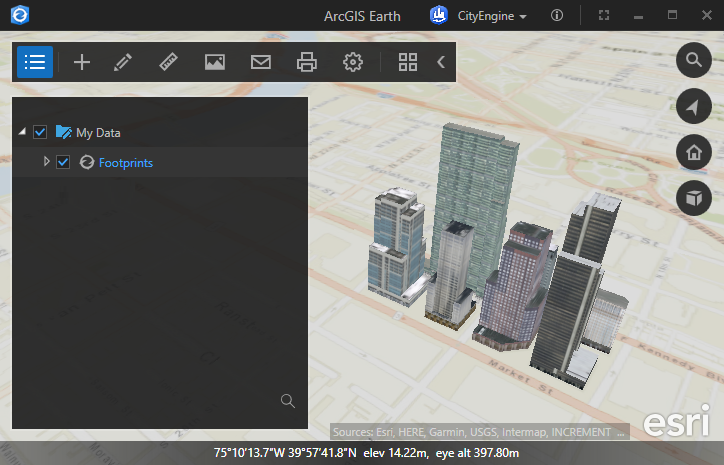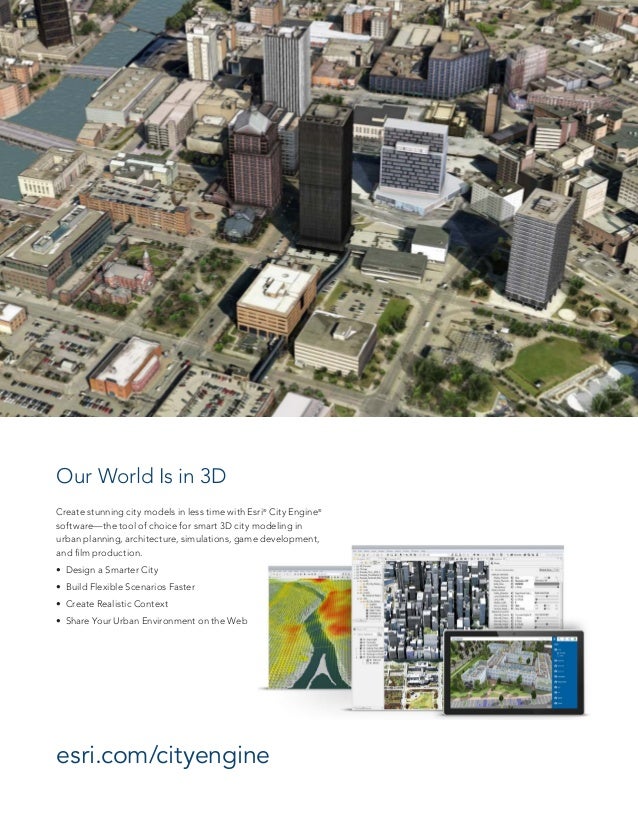
- #Import rpk into workspace cityengine update#
- #Import rpk into workspace cityengine archive#
We will use an aerial photograph to generate a DEM model (DEM = Digital Elevation Model).
First, we must load in the terrain of our little town. I will call the scene “ Cocksdorp.cej” (Cocksdorp is a small town in North Holland). Window » Layout » Default.Ĝreate a new scene, Navigate to the scenes folder and RMB » New » CityEngine Scene. Reset the layout back to the default if you haven't already. Select the heightmap and the texture files for import CityEngine will find the edge that is facing a street and make it the First Edge. Select the surface, got to Shapes » Compute First/Street Edges. Instead, we will use CityEngine’s built in function to find the First Edges for us. However, this process becomes tedious when we have hundreds of shapes. We can correct this by manually selecting the edge we want as front and go to Shapes » Set First Edge. 
As you can see, our front is facing the wrong direction.
If you look very closely, you will see an orange edge somewhere on your surface. The Start Rule indicates where to start generating of a model. You will get a window saying that there is no Start Rule found in “BasicBuilding.cga”. Select our new surface, RMB » Assign Rule File. » BasicBuidling.cga » Open. Now we have a much bigger and cleaner space to write our rules. Go to Window » Layout » Rule Editing Compact. You can drag the edges and expand it, but instead we will use one of the Layout presets. Our Rule editor window is way too small for us to write our codes, so let’s make it bigger. As for the Selectors, you can choose one of the following: top, bottom, right, left, front, back, side (all sides, except top and bottom) or all (all sides). extrude(axis, height) : This function will take the selected surface and extrude it along the defined axis (x,y or z) with a given height. In order to do this, we will aim to create a basic building.ĬityEngine mainly uses three operators to generate a 3D building from a flat surface. We will start with the basics to get ourselves familiarized with CGA language. To create such detailed model as the Temple will require some time and a firm understanding of CGA language. Iteratively refine a design by creating more and more detail The following rule derivation illustrates the process: on the left side the initial shape is shown and on the right side the resulting generated model is displayed. These rules operate on shapes which consist of a geometry in a locally oriented bounding-box (so-called scope). The idea of grammar-based modeling is to define rules that iteratively refine a design by creating more and more detail. 
The term CGA stands for Computer Generated Architecture. The CGA shape grammar of the CityEngine is a unique programming language specified to generate architectural 3D content. Try experimenting with different values and also for the other flats.
#Import rpk into workspace cityengine update#
The building will change form every time you update the model. Press Ctrl+Shift+G or click on the Update Seed button (next to Generate button).
Notice the Variation_Mode under the Building Height parameters is set to Random.  Select one of the modern flats and notice that in Rules none of its parameters are derived from the Object Attributes table. Rules can still be applied to these models. They are basically static textured 3D models, but CityEngine calls them Shapes instead. The reason is that these models are Multipatches imported into CityEngine.
Select one of the modern flats and notice that in Rules none of its parameters are derived from the Object Attributes table. Rules can still be applied to these models. They are basically static textured 3D models, but CityEngine calls them Shapes instead. The reason is that these models are Multipatches imported into CityEngine.  If all goes well, you should see a similar image as the one to the right.Įven though you clicked not to re-generate the models, you still see 3D buildings in your viewport. Re-generating your whole scene can be demanding on your computer performance, especially with large projects.) (if you get a pop-up, asking whether you want to regenerate models, click on NO. Navigate to the scenes folder and double-click to open the Example.cej file.cej files are like.
If all goes well, you should see a similar image as the one to the right.Įven though you clicked not to re-generate the models, you still see 3D buildings in your viewport. Re-generating your whole scene can be demanding on your computer performance, especially with large projects.) (if you get a pop-up, asking whether you want to regenerate models, click on NO. Navigate to the scenes folder and double-click to open the Example.cej file.cej files are like. #Import rpk into workspace cityengine archive#
In the Import window Select archive file and browse to the location of the downloaded file and open it.Select Existing Projects into Workspace and click Next. To import our project RMB in the Navigator window and choose Import.Open CityEngine and close the Welcome Wizard for now so you can see the interface.








 0 kommentar(er)
0 kommentar(er)
